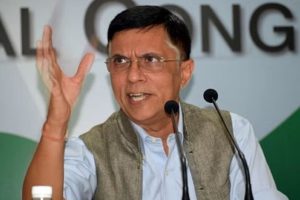The National Security Strategy (NSS) is a document prepared periodically by the executive branch of the Government of India. It outlines the major national security concerns of the country and how the administration plans to deal with them. The Defence Planning Committee (DPC), a senior decision-making mechanism created April 2018 by the Modi Government, will have several mandates including the preparation a draft NSS. There have been several attempts at formulating a national security strategy. The National Security Advisory Board (NSAB) had formulated draft national security strategy documents on four different occasions.
These had been presented to successive governments, but the political class has not responded suitably. There has been a lingering worry in the minds of politicians about a potential commitment trap if and when the national security strategy in put in black and white. Finalisation of a comprehensive NSS and creation of the post of a Tri-Services chief are among the “important priorities” of the bornagain Modi government especially after the Pulwama outrage and the successful Balakot retaliation.
Advertisement
Though there is some skepticism within the country’s security establishment about the utility of having the NSS as well as a new Tri-Services chief in the person of a permanent chairman of the Chiefs of Staff Committee, as recommended earlier by the Naresh Chandra Committee in 2011, the two “long-pending and long-deliberated measures” figure prominently in the perspective of national security. “A draft NSS is already ready.
The final version will, of course, have to be first approved by national security adviser Ajit Doval and the National Security Council (NSC) before it comes up for clearance by the Cabinet Committee on Security,” said a source. “Similarly, the Army, Navy and IAF chiefs agreed in writing to the proposal over a year ago. In the Modi 2.0 government, there will be a stronger push for systemic reforms in the overall national security architecture, which could not be undertaken in the 2014-2019 timeframe.”
The NSS will be a “formal overarching document” that will lay down India’s long-term national objectives and interests in the face of external and internal threats. Different ministerial departments and wings of the government will be able to derive their individual goals from the NSS, with the overall aim to safeguard India’s territorial integrity and strategic autonomy
There have been several attempts in the past to formalise the NSS, but these have failed to get the government’s final approval. In the latest such endeavour, the NSAB ~ an expert group under the NSC ~ had also prepared a draft NSS on the directions of the PMO last year
Similarly, the post of a TriService chief ~ a four-star General like the Army, Navy and IAF chiefs ~ has been hanging fire since the 1999 Kargil conflict with Pakistan despite the urgent need to inject the much-needed synergy in planning, budgeting, procurement, training and logistics in the three Services, which often pull in different directions. The permanent chairman of the Chiefs of Staff Committee will focus on “capacity and capability development” in the armed forces, with hard-nosed interService prioritisation required to systematically build military power within budgetary constraints. Hopefully, the Tri-Service chief will provide ‘single-point military advice’ to the government and will also be a member of CCS.
The existing CoSC comprises the Army, Navy and IAF chiefs, with the senior-most among them being the chairman by rotation. The present PC-CoSC has no operational role, with the three chiefs being left free to run their own Services. In that case the Tri-Service chief will only be a cosmetic appointment without any authority. The proposed post is actually a watered-down version of the original plan to have a chief of defence staff (CDS) to provide “single-point military advice” to the government, which was found lacking by the political leadership during the Kargil conflict.
Consequent to the submission of the Kargil Review Committee report, a group of ministers (GoM) headed by the then Deputy Prime Minister L. K. Advani had analysed the functioning of the higher defence organisation in 2002. Among the major recommendations of this GoM was the establishment of the post of CDS with a Tri-Service joint planning staff headquarters. The CCS accepted this recommendation but kept its implementation in abeyance. The two reasons cited for the deferment were the lack of political consensus and the bureaucratic impediment. “It will be easy for the Army to take over the country through a coup”.
This false propaganda of the bureaucratic leadership created doubts in the minds of the political leadership because the Indian Army is apolitical in the true sense of the term. Hopefully, this time the bureaucratic leadership may not be able to misguide Narendra Modi as he has a wider vision, deep understanding and full faith in the armed forces.
The majority of developed countries have a CDS as head of the armed forces and ‘single adviser’ to their governments on matters military. In the US, the head of the armed forces is the Chairman of the Joint Chiefs of Staff (CJCS) for evaluating and developing force-structure requirements. He conducts joint, bilateral, and multilateral war games and inter-agency political-military seminars and simulations. It develops, maintains, and improves the models, techniques, and capabilities used by the Joint Staff and combatant commands to conduct studies and analyses for CJCS.











